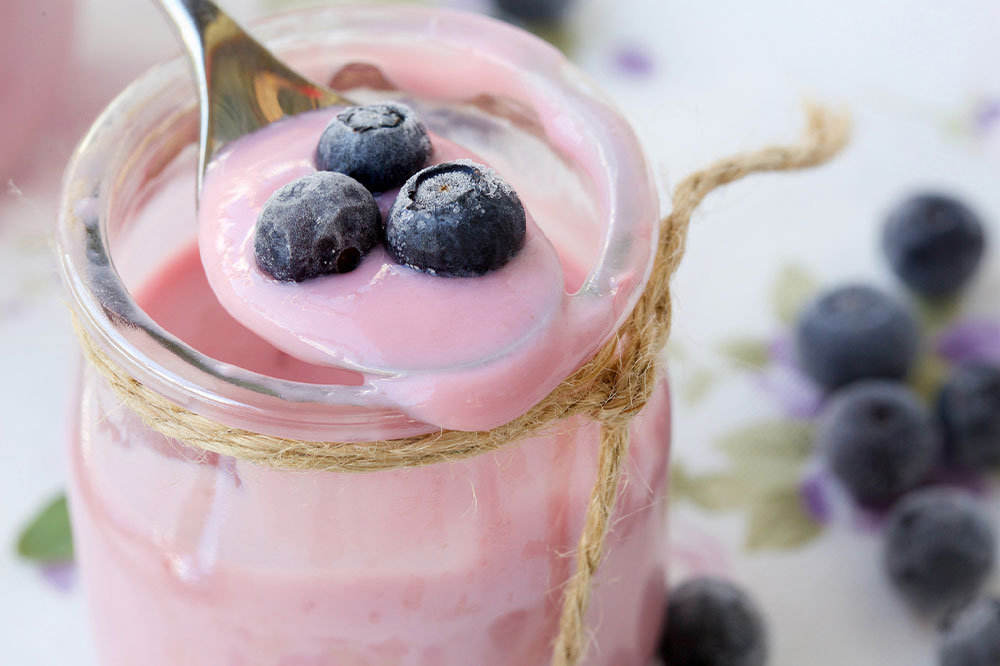
6 foods to fight the effects of leukemia
Leukemia is a term that encompasses types of cancers that affect the blood-forming tissues and cells. The condition is more prominent in adults over 55 but is also seen in children younger than 15. A permanent cure for leukemia is still in the works. But one can cope with and manage the condition by following prescription therapies and treatment options. Including these six foods in regular meals may also help improve one’s ability to fight leukemia.
Yogurt
The first step in following a specific meal plan to manage leukemia is to add more probiotic-rich foods like yogurt. Probiotics can complement healthy bacteria in the stomach, which helps the affected person handle the food in the system. Probiotic bacteria can also increase and decrease the production of anti-inflammatory cytokines, which have an important role in preventing cancer formation. Other probiotic-rich foods include kefir, sauerkraut, and tempeh. Miso, kimchi, traditional buttermilk, and specific cheeses like mozzarella, cheddar, and cottage cheese are also good probiotic sources.
Apples
Apples are also known to ward off the effects of leukemia. The fruit contains polyphenols, which have anticancer properties. Phloretin, a polyphenol compound, inhibits glucose transporter 2 (GLUT2). This is a protein that plays a part in advanced-stage cell growth in certain types of leukemia. Research indicates that people with breast cancer who include apples in their daily meals may notice improvements in their cell condition. The plant-based compound, phloretin, may also help prevent infections and cardiovascular diseases.
Berries
Berries aren’t just full of flavors. They also contain properties that can fight leukemia. Most berries contain antioxidants that are said to protect the body from cell damage, which may otherwise result in skin cancer. The addition of berries to one’s meal plans can also improve their ability to tackle the effects of lunch, breast, esophagus, and bladder cancers. One can also enjoy having berries by adding them to a bowl of yogurt or cereals. The fruit can also be had as a low-fat strawberry smoothie or baked into oatmeal muffins. Additionally, berries are rich in vitamin C, which can help nourish the body following leukemia treatments.
Broccoli
Adding certain vegetables to your daily meal regime can also help improve one’s immunity against the harmful effects of leukemia. Broccoli is a cruciferous vegetable packed with high amounts of a phytochemical called sulforaphane. The leukemia-fighting plant compound may help reduce the risk of breast, prostate, oral, and colon cancer. Sulforaphane can also be located in other veggies like cabbage, garden cress, kale, and cauliflower. These vegetables also contain carotenoids— antioxidants that can improve one’s immune system. Other beneficial properties include vitamin c, glucosinolates, folate, and flavonols.
Fatty fish
Several types of fatty fish help manage the effects of leukemia. They contain omega-3 fatty acids, potassium, and vitamin B, which are known nutrients beneficial for the patient’s immune system. A few healthy fish sources include mackerel, anchovies, salmon, and herring. Research indicates that people who regularly included freshwater fish in their meal plans had a lower risk of colorectal cancer. Furthermore, the consumption of fish oil may also help curb the risk of prostate cancer. To notice the benefit of fish, one must have them with meals at least twice per week.
Tomatoes
Tomatoes are usually the base ingredient of most meals. The plant carries a number of health benefits, including properties to fight leukemia. Tomatoes contain the antioxidant lycopene, which has a strong potential to fight prostate cancer. The effects are even better in processed tomato products like tomato sauce or ketchup because they contain lycopene that is already released, which makes it easy for the body to absorb. The vegetable is also rich in vitamins A, C, and E, which can tackle free radicals that may otherwise lead to the development of leukemia. Lycopene can also be found in foods like pink grapefruits, apricots, pink guavas, and watermelons.
When a person suspects any symptoms of leukemia, they must consult a healthcare specialist immediately. If the disease is diagnosed, the doctor will recommend certain treatments, including prescription options, which include:
Jakafi® (ruxolitinib)
Licensed professionals recommend the prescription tablet for the treatment of certain disorders of the bone marrow, like polycythemia vera. In this condition, factors known as JAK proteins transmit signals that can alter the production of blood cells in the bone marrow. The incorrect signals may lead to the production of more blood cells which may lead to bone marrow disorders. Jakafi® can target these growth factors and remove them to control the production of blood cells. The prescription is recommended when the patient has taken hydroxyurea with no improvements in their condition or if they cannot tolerate it. One should also remember that Jakafi® is not a form of chemotherapy.
Venclexta (venetoclax)
The prescription tablet known as Venclexta is prescribed as an oral therapy to treat adults with chronic lymphocytic leukemia (CLL) or small lymphocytic lymphoma (SLL). It is also prescribed in combination with decitabine, azacitidine, or low-dose cytarabine for the treatment of newly diagnosed acute myeloid leukemia (AML) in adults (75 years of age or older) or for those with other health conditions.
Rituxan® (rituximab)
Rituxan® is prescribed for adults with Non-Hodgkin’s Lymphoma (NHL) as a standalone alone treatment option or with chemotherapy. The CD20-directed cytolytic antibody is also prescribed for adults with Chronic Lymphocytic Leukemia (CLL) in combination with chemotherapy prescriptions like fludarabine and cyclophosphamide. The antibody therapy targets and latches onto the CD20 proteins found on the surface of NHL and CLL cells. The process allows the immune system to eliminate the abnormal cells or causes them to destroy themselves.